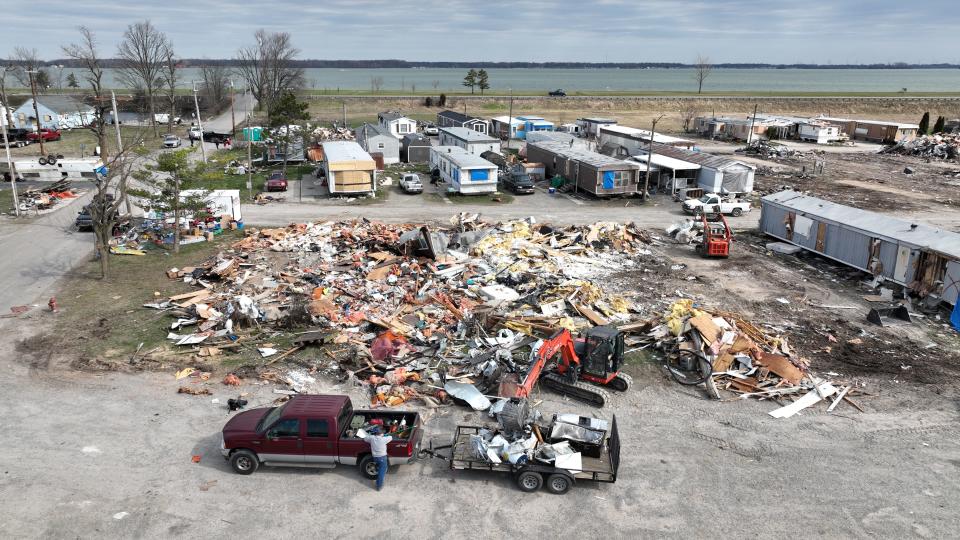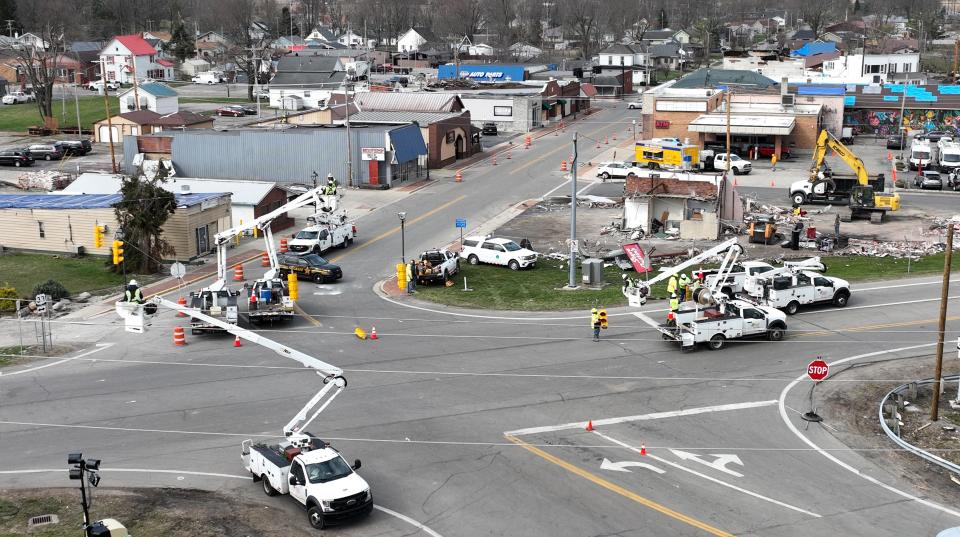After deadly tornadoes ravage Ohio, experts warn early, strong storms could become norm
After a deadly late-winter tornado devastated parts of central Ohio, meteorologists warn that tornado season hasn’t even started and that these powerful early storms might become more common in coming years.
Ohioans experienced 18 tornadoes so far in 2024, the most on record this early in the year, according to the National Weather Service, eight of which touched down in central Ohio.
Three people died in an EF-3 tornado in Logan County, and damage was reported in Auglaize, Mercer, Darke, Miami, Union, Delaware, Licking, Hancock, Crawford and Richland counties.
Gov. Mike DeWine announced Thursday that teams from the Federal Emergency Management Agency will conduct damage assessments in the 11 counties affected by the storms to determine the need for additional assistance
The National Weather Service recently surveyed damage via helicopter, but meteorologists do not expect additional tornadoes to be confirmed, National Weather Service meteorologist Logan Clark said in an interview Thursday.

Clark said the next 7-10 days should have little risk of tornado activity due to slightly cooler-than-average temperatures. But Ohio still hasn’t reached its peak severe weather season, which typically runs from April to early June.
“One thing to keep in mind is that we're still kind of entering what would be considered normal severe weather season,” Clark said. “So, yeah, that potential (for more tornadoes) always exists.”
Did global warming play a role in Ohio's deadly tornadoes?
It's tough to tie any single weather event to global warming, Clark said. However, scientists also note that changing climates and warming oceans impact the jet stream.
But Clark said during winter, the jet stream is most active. Jet streams are strong bands of wind that run west to east across the globe. That jet stream wind combined with unseasonably warm temperatures creates a favorable environment for storm supercells.
“Whenever you get supercells, those are your biggest severe weather makers,” Clark said. “Your most notorious tornado producers as well.”
According to the weather service, a supercell is the least common type of thunderstorm that can bring damaging winds, large hail and tornadoes. A supercell thunderstorm was responsible for the tornadoes across Ohio, Indiana and Kentucky.

Are early, severe tornadoes the new normal?
The tornadoes were the second batch of tornadoes Ohio saw this year. On Feb 28, six tornadoes were confirmed across Franklin, Montgomery, Madison and Clark counties.
“Even last year, we did have some really early season tornadoes as well,” Clark said.
Five tornadoes were confirmed in central Ohio in February 2023. Experts say February tornadoes are not unheard of as air temperatures warm toward the end of winter, but the storms still fall outside Ohio’s normal tornado season.
Global warming could shift tornado season early in the future, leading to strong storms in the future that draw from strong winter winds. The slow shift toward earlier springs and later falls could lead to more tornadoes or stronger storms in general.
“We can't really say that with certainty,” Clark said. “Whenever you do get that increased warming earlier in the season, then you do have that potential if everything kind of aligned together to produce a system that has very strong dynamics.”
This article originally appeared on The Columbus Dispatch: After deadly tornadoes ravage Ohio, experts warn more could come

